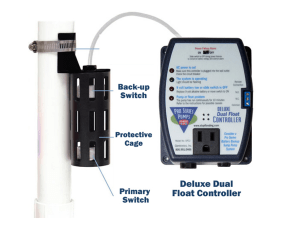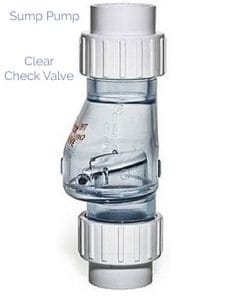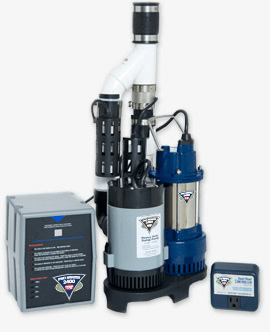How does a Sump Pump Work?
Sep 22, 2011Sump pump systems have been a common fixture in homes for many years. Most of these homes tend to be in low-lying areas where basements flood on a regular basis. Today, sump pumps are becoming more and more popular because of the protection they provide. Each year thousands of homeowners lose personal belongings, appliances, heating systems, etc…. due to basement water problems. These homeowners would have been protected if they had installed a sump pump system.
Over the next few weeks, we will explore the question “How does a Sump Pump work”. Usually, people who have a sump pump system have some idea how a sump pump works. In this series of posts, we will talk about installing a sump pump, the components of a sump pump system and why you should have sump pump in your basement.
The Basic Components of a Sump Pump
How does a sump pump work?
- Pumps Water from point A to point B
- Primarily used in below grade applications where water can not be drained by gravity
Sump Pump Liner
- Sump pump systems should be installed in a liner that will collect the water to be pumped out.
- Sump pump liners help protect the pump from becoming clogged with dirt and debris.
The Sump Pump Impeller
- Water moves through the sump pump with the use of a small disk modified with fins. Commonly referred to as the impeller.
- The impeller spins at a speed of 1,700-2,500 RPM’s and pushes water through the discharge line.
 The Sump Pump Switch
The Sump Pump Switch
- A float or sensor will automatically turn the sump pump system on and off.
- The float or sensor is activated by the water level within the sump liner.
 The Sump Pump Check Valve
The Sump Pump Check Valve
- Prevents discharged water from coming back into the sump liner when the pump shuts off.
- Properly installed sump pump systems will have a clear check valve outside of the sump liner.
Sump Pump Systems, like most products, have improved greatly because of new technology.
Today’s systems are equipped with diagnostic controls that can tell you if there is a problem. There are systems that can protect against power outages and primary pump failure. There are even systems that will call you if a problem occurs. There are many factors to look at when answering the question “How does a sump pump work” and what you need to think about when installing a sump pump system. Read more and learn how to keep your basement dry.


